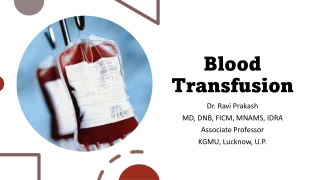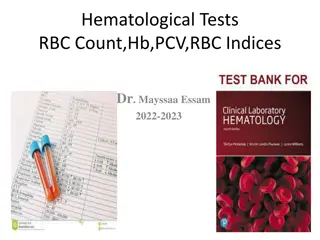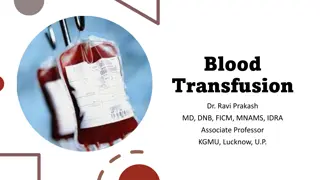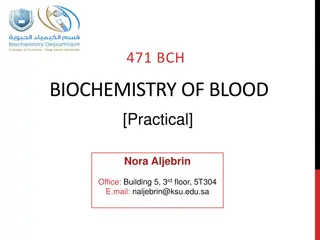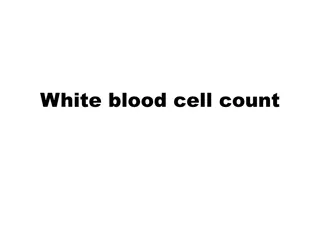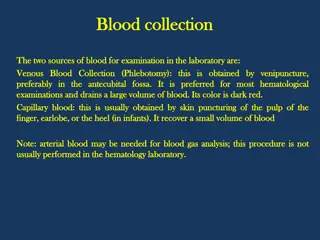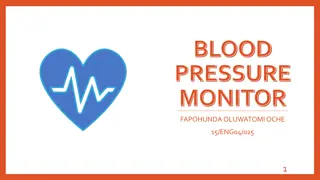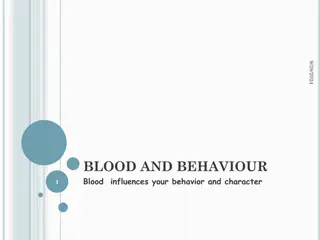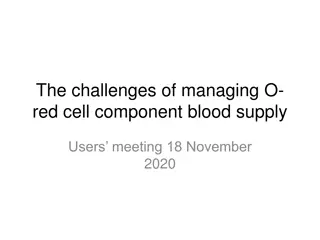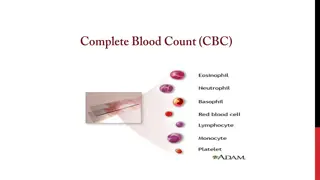Blood Collection Methods and Safety Measures
Blood collection techniques such as venipuncture and capillary blood collection are discussed along with the safety measures to be followed. Materials required, steps of the procedure, and precautions outlined for a successful blood collection process. Detailed information provided on gloves, needles, tourniquets, and disposal methods to ensure safety and proper handling.
Download Presentation

Please find below an Image/Link to download the presentation.
The content on the website is provided AS IS for your information and personal use only. It may not be sold, licensed, or shared on other websites without obtaining consent from the author.If you encounter any issues during the download, it is possible that the publisher has removed the file from their server.
You are allowed to download the files provided on this website for personal or commercial use, subject to the condition that they are used lawfully. All files are the property of their respective owners.
The content on the website is provided AS IS for your information and personal use only. It may not be sold, licensed, or shared on other websites without obtaining consent from the author.
E N D
Presentation Transcript
StudyMafia.Org Blood Collection Submitted To: Submitted By: Studymafia.org Studymafia.org
Table Contents Definition Introduction Materials Required Safety Measures Procedure of Blood collection Blood Culture Conclusion 2
Definition Venipuncture is the most common method of obtaining a diagnostic blood specimen. 3
Introduction Blood collection methods include (1) venipuncture (penetrating a vein with a needle) with an evacuated tube system, syringe method, or butterfly infusion set; and (2) capillary blood system whereby the skin puncture is done with the use of a lancet. Use of the evacuated blood collection system is preferable because it allows the blood to pass directly from the vein into the evacuated tube eliminating the need for specimen transfer. 4
Materials Required Safety Needles, 22g or less Butterfly needles. 21g or less Syringes Vacutainer tube holder Transfer Device Blood Collection Tubes. Tourniquets. Single use, disposable, latex-free tourniquets Antiseptic. Individually packaged 70% isopropyl alcohol wipes. 2 2 Gauze Sharps Disposal Container. An OSHA acceptable, puncture proof container marked Biohazardous . Bandages or tape 6
Safety Measures Observe universal (standard) safety precautions. Observe all applicable isolation procedures. PPE s will be worn at all times. Wash hands in warm, running water with a appropriate hand washing product, If hands are not visibly contaminated a commercial foaming hand wash product may be used before and after each patient collection. 7
Safety Measures Gloves are to be worn during all phlebotomies, and changed between patient collections. Palpation of phlebotomy site may be performed without gloves providing the skin is not broken. A lab coat or gown must be worn during blood collection procedures. Needles and hubs are single use and are disposed of in an appropriate sharps container as one unit. Needles are never recapped, removed, broken, or bent after phlebotomy procedure. 8
Safety Measures Gloves are to be discarded in the appropriate container immediately after the phlebotomy procedure. All other items used for the procedure must be disposed of according to proper biohazardous waste disposal policy. Contaminated surfaces must be cleaned with freshly prepared 10% bleach solution. All surfaces are cleaned daily with bleach. 9
Procedure of Blood Collection Identify the patient, two forms of active identification are required. Ask the patient to state their name and date of birth. This information must match the requisition. Reassure the patient that the minimum amount of blood required for testing will be drawn. Verify that any diet or time restrictions have been met. 10
Procedure of Blood Collection Order of Draw The following order of draw is the approved order as established by CLSI. This order of draw should be followed whenever multiple tubes are drawn during a single venipuncture. This is to prevent cross contamination by the tube additives that could lead to erroneous results. 11
Blood Culture Light Blue Top (plasma): 3.2% sodium citrate. These tubes are used for coagulation tests and need to be completely filled to ensure the proper ratio of blood to anticoagulant. Red Top (serum): Plain and gel. Used for chemistry and reference tests. Green Top (plasma): With and without gel, contains lithium heparin. These tubes are used primarily for chemistry tests. 12
Blood Culture Lavender or Pink Top (plasma): Contains EDTA. Used primarily for hematology and blood bank testing. Gray Top (plasma): Contains sodium fluoride/potassium oxalate. Used by chemistry for glucose testing. Yellow Top (plasma and cells): Contains ACD solution A or B. Used for Genetics testing. 13
Conclusion A procedure in which a needle is used to take blood from a vein, usually for laboratory testing. Phlebotomy may also be done to remove extra red blood cells from the blood, to treat certain blood disorders. 15
References Google.com Wikipedia.org Studymafia.org Slidespanda.com
Thanks To StudyMafia.org


